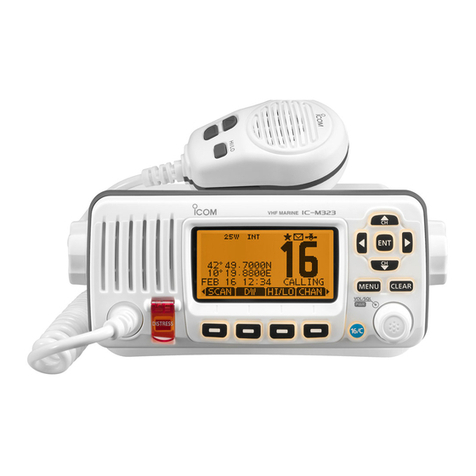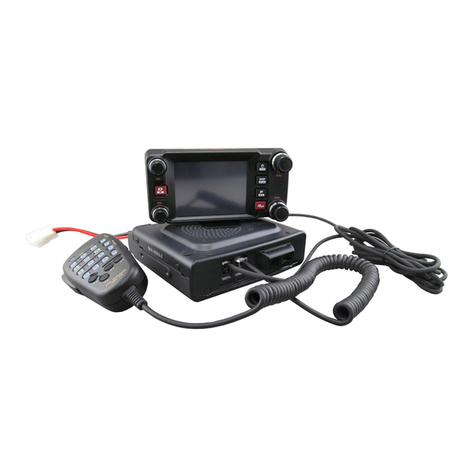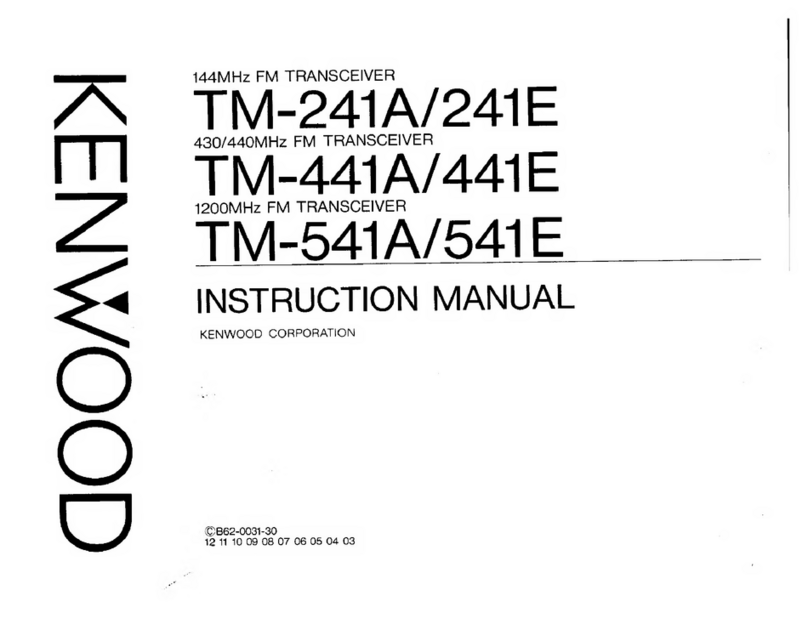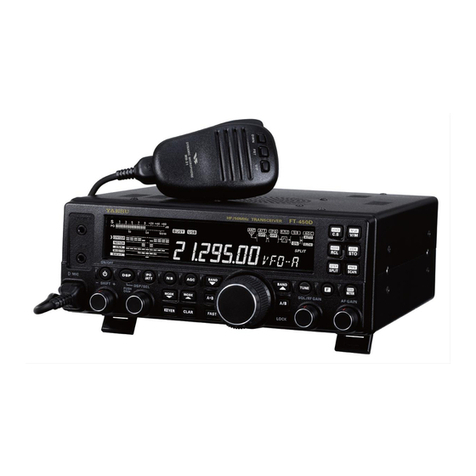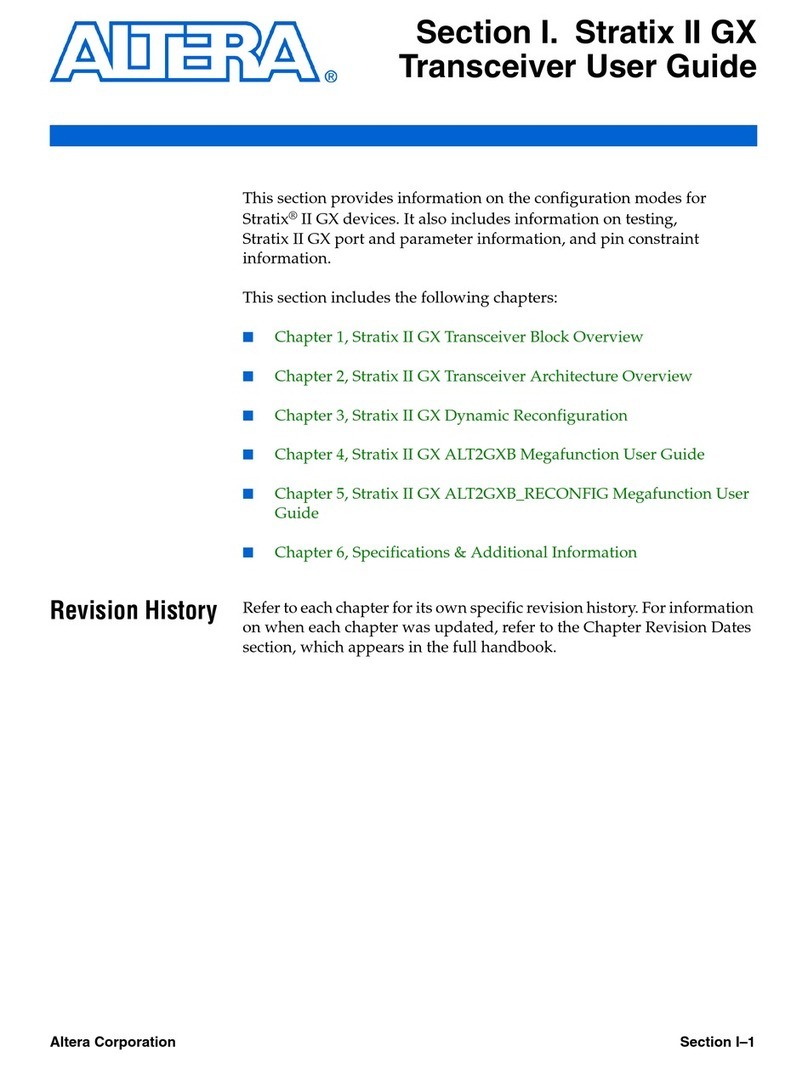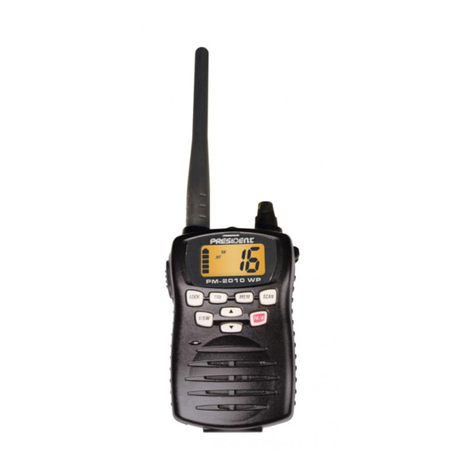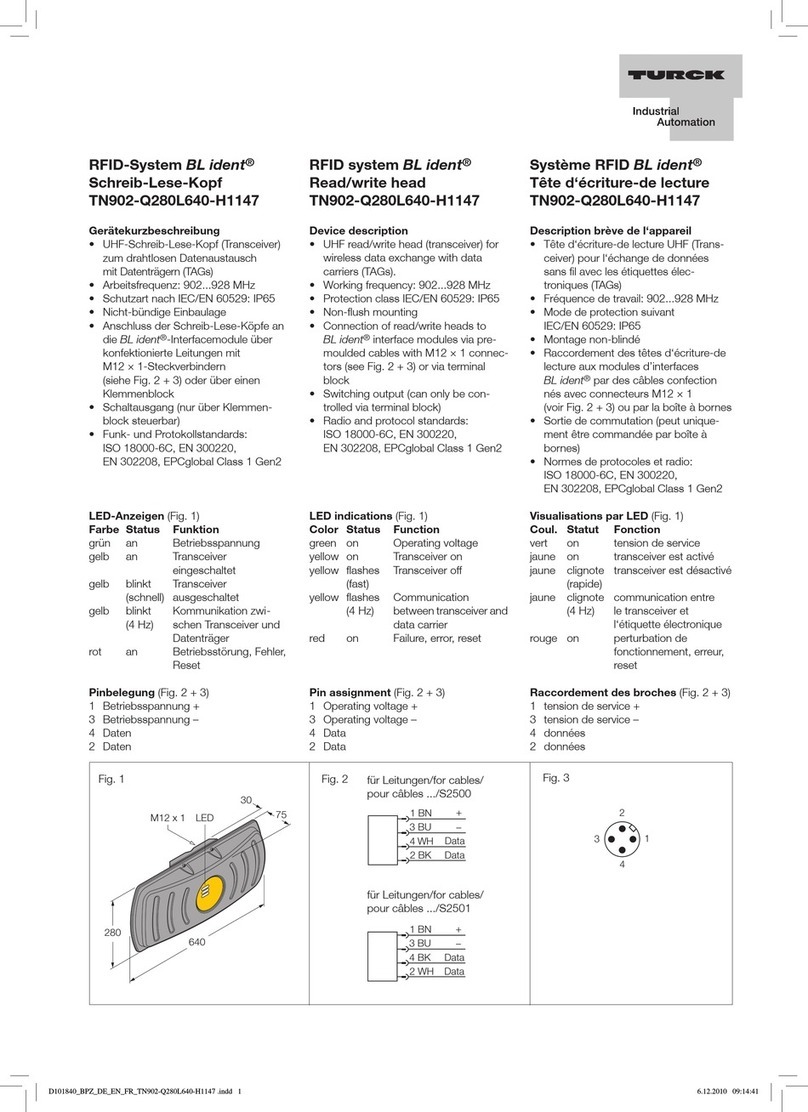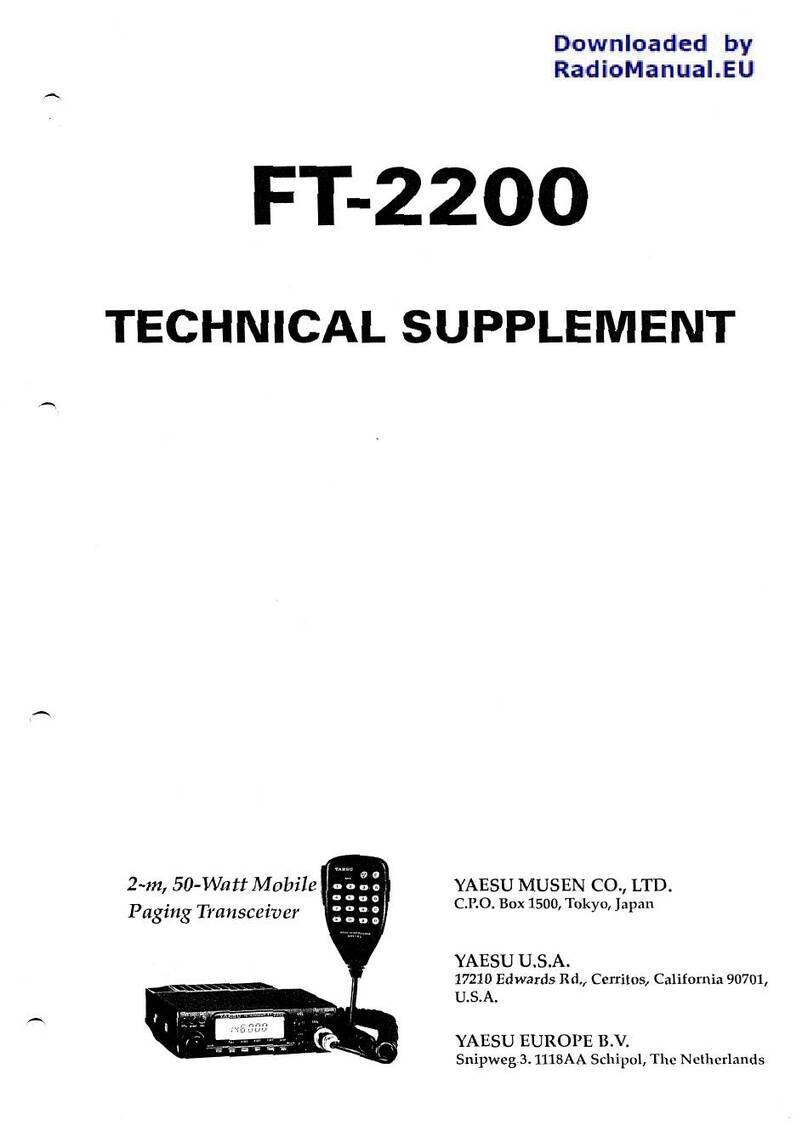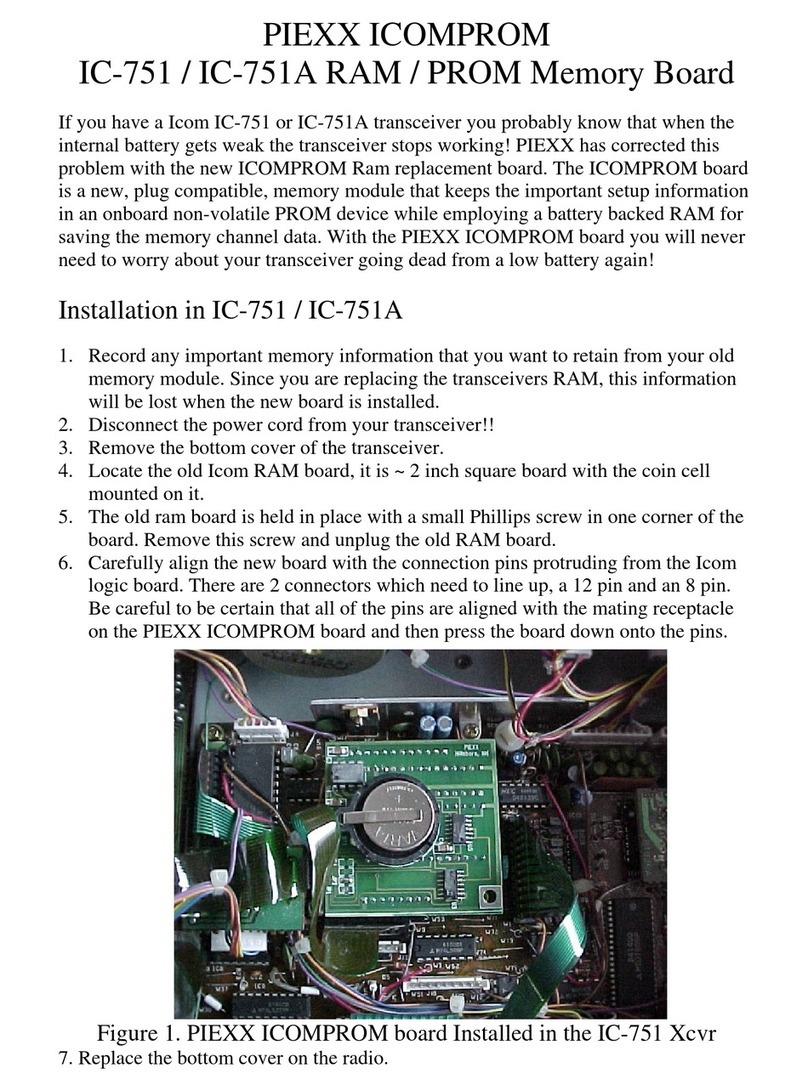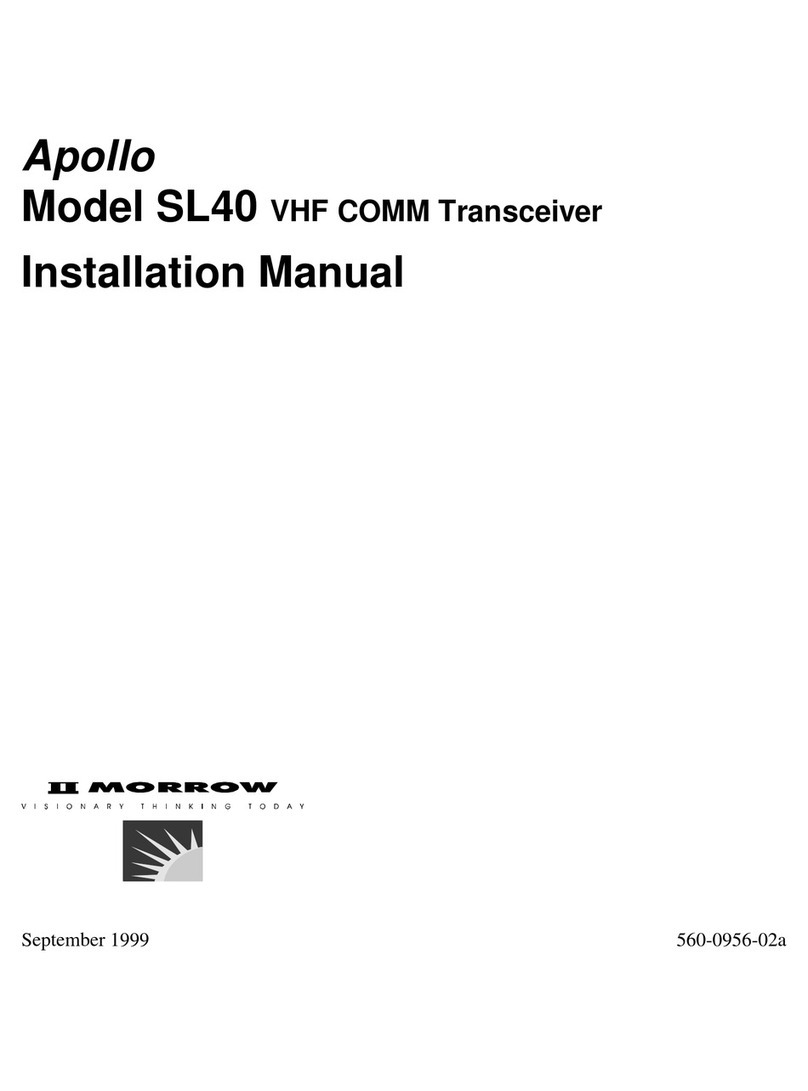FDK MULTI7 User manual


Page
1
of
10
DM??C
INSTRIJCTION
MANUAL
FOR
MODEL
MULTI
7
ANATEXJR
VHF/FM
TRANSC'EIVFR
1-
1
1fMy Channeltf Function
:
The model has 24 channels, namely 22 channels plus one fWy Channeltl
and
VFO
one.. "My Channel"
is
the function available easy
&SY
to your
private channel like a club one.
1-2 ttTunet' knob.
It
tunes and varies receive frequency and
is
strong effectively for
noise interference owing to frequency slide.
1-3 Center Meter(M6criminator Meter
1.
The meter
is
switchable to
S
meter and Center meter. When
it
is
on
Vreq.It position, namely as the center meter, you can watch an counter
station's freq. slide. So,
it
can be used conveniently together with
1TunefI function.
1-4
A.
F.
B.
(Audio Feed Back) Squelch Circuit.
We
F.
D.
K.
developed the particular
4FB
sq. circuit. Comapared with
the usual noise-amp. squelch, the
AFB
one can work stably, which does
not break owing to some change by counter station's modulation, etc.,
since audio signal
is
returned. The two-step noise amplifiers are
employed and squelch points
is
settled smoothly. Besides,
it
works
even if
it
is
against weaker signals.
1-5
Output Power Selection of
?OW(
HI
)
and
I\(
LOW
).
By switching the Output Power Selector, you can select
a
suitable out-
put power from
I0
or
1
Wtt, seeing distance or situation between you
and
a
counter station. You do not interupt or interfere against any
other stations on
QSO
at a selected output power.
1-6
Helical Resonator and Crystal Filter.
The former
is
used for RF stage of receiver circuit and the latter
is
adopted to
1st
IF stage with
a
ceramic filter. So, Multi
7
has the
.
superior characteristics of band and cross-modula tion.
1-7
Speaker Position,
According
to
mounting space or situation, you can change and replace
.
the position of speaker from the bottom to the top of the set so
as
to
listen clearly.
1-8
Transmitting Indicator,
The red
lamp
is
put on when transmitting. You can watch mis-operation,
etc.
1-9
Accessory Terminal.
The +pin terminal
is
reserved
at
rear of the
set.
It
is
adaptable
to
VFO
connection, stand-by function, external microphone, ext. discremi-
nator meter and etc.

Page
2
of
10
1- 10 Professional Circuit Design.
1-70-1 For modulation circuit of the transmitter, the
IDC
splatter
filter
was
employed.
It
prevents over deviation, namely over-
modulation and clears up interference against other stations.
Also
it
can correspond to future tWarrow Band" modification easily.
1-10-2 Planned the drastical decrease of spurious by low-pass filter
adopted to antenna circuit.
7-10-3 used the perfect-shielded module system for driver and final
circuits.
1-10-4 The receiver circuit consists of each 2-step
W,
1st IF, lirnitter
and 6-step 2nd IF.
1-10-5 The
FET
were adopted to the 2-step RF and the 1st Mixer, and
eievate two-signal characteristics.
1-10-6 Used the helical resonator, crystal filter and ceramic filter
effectively and they are workable to get high sensitivity and two-
signal characteristics. You can mofify Multi7 to 1lWarrowll band type
simply.
1-10-7 Adopted the reliable speaker. Size: 92
m/m
Output: I-Watt
The speaker
is
housed in front-inclinated cabinet. This design
contributes to get clear sound and makes
a
fine accoustic effect.
2.
SPECIFICATION
2-1 General
semiconductors: 27-Transistor,
SFET,
1-IC, 1-SCR and 18-~iode
Freq. Coverage: 144.00
-
146.00
MHz
Channel
Capacity:
2Fchannel plus one external
VFO
channel
Power Sou.rce:
DC
13.5
V(
operating range: 11.0
-
15
V
,
negative ground
)
Power ~onsumpt'ion:
2.3
A
approximately at
flHI"
on transmit
1.2
A
approx. at
"LOW"
400
mA
on receive
Dimensions: 134(~) 216(~)
58(~)m/rn(
75
dm
max.
)
Weight: Approx.
1.6
Kg
2-2
Transmitter
Wssion:
F3
Ant.
Impebnce: 50 ohms
Modulation: Vector Composite Phase Modulation
Freq. Multiplication: 12 times
Freq. Deviation: 12
KHz
max.
Spurious Radiation:
-60
d~
or less
Output Power: 10W
at
llHI",
1VI
at 'lLON"
Mi
crophone
:
600-ohm, dynamic, press- to-
tall
type.
2-3 Receiver
Emission:
F3
Receiver System: Double Super-heterodyne

Page
3
of 10
Intermediate Freq.: 1st
-
10.7 MHz, 2nd
-
455 KHz
sensitivity: S/N
30
dB or up at 1 uV input( at 7.5
KHz
deviation
with
1
KHz
AF
.)
selectivity:
10
KHz
(
-
6
dB),
19
KHz(
-
50 d~)
Image Ratio: 60 dB or up
supurious Sensitivity: 60 d~ or up
1st
Local Osc. Freq.'. P!ultiplication:
3
times
Audio output:
2
W
(
at
I&
distortion, &ohm load
)
Speaker: 92
m/n$
&ohm
2-4
Accessories
1.
Dynamic Microphone, press-to- talk type with curled cord and
4-pin plug
.
.
.
..
1
pc.
2. Microphone Hanger
.....
1
pc.
3.
Bracket and Fixtures for car dash mounting
.
.
.
.
.
1
set
4.
2m long
DC
pwer cord with fuse and fuse holder( red-positive,
black-negative
)
5.
Fuse
(
3A
)
.....
1 pc.
6.
External Speaker Plug
..
.
.
.
I
pc.
7.
Accesso'ry plug
.
..
.
.
1
pc.
3.
Features.
3-1 Power
ON/OFF
and Output Power Selector.
OFF
at
center, Power at
HI
or
LOW.
3-2 Microphone Connector.
3-3
Meter
It
warks
as
a
S
meter, center meter and output power one.
S
meter
arorks
full-scale
at
approx. 20 dB inpu. Center meter shows
2
or
3
KHz
at
1-scale range. Output power
is
indicated approx.
8
at
10
Watts and
50
ohms load. 'he meter
is
switched to S or Center by the
selector
at
the rear of set.
3-4
Channel Indicator.
gdhen power on,
A
channel
is
shown illuminated. But
it
is
put off when
you operate Multi
7
at
"My Channel".
35
Channel Selector
3-6
Squelch Control.
Tune
clockarise
and squelch
is
closed.
3-7
Vy'channel" switch-
You can do QSY
to
your own channel preset by onely one-touch to the
switch.. Try push
it
and automafrically the channel
is
changed to the
'my
Channel", regardless of the channel selector position. When the
above case
is,
the channel indicator illumination
is
put off. Again,
push the knob and the original channel selector workso
It
is
enough to
install the particular freq. crystals you specify into the
"Mu
positions
for
hc
and
Rx
crystals
in
the set.

Page 4 of 10
3-8
Tune Knob.
~t
mrks to revise freq. slide. Set the knob
at
a position that you
can listen most clearly.
If
the knob
is
tuned clockwise, receive
frequency comes to higher. Other hand, the receive frequency comes to
lower when the knob ia tuned counter-clockwise.
3-9
Volume Control.
When you tune the knob clockwise, volume comes up.
3-10 ~ransrnittin~Indicator Lamp.
It
puts on when transmitting, namely, you press the "Push-to-talkH
button on the microphone.
3-11
Meter Function Switch.
Set the switch at "S" position, the meter works
as
a
S meter. Other
hand,
when you set
it
at
"Freq." position,
it
works
as
a Center meter.
3-72
Ekt.
Speaker Jack.
When you use
an
external speaker, connect with Multi
7
by accessory
plug furnished.
3-13
Antenna Co~ector.Use
a
M
type plug.
Its
impedance
is
50-ohm
required.
3-14 Power Cord Connector. Use the accessory one.
3-15
Accessory Terminal.
It
is
a
9-pin plug for the following purposes.
Temj.nal
I:
VFO
receive-inpu Terminal
5:
Positive Power Source(
13.5V
2:
Stand-by signal(When grounded
6:
Transmit Power Source
it
comes to transmit)
7:
Receive Power Source
3:
Microphone
8:
Discreminator Output
4: Grounding
9:
VFO
transmit-input
4.
Notices prior to Power-on.
The Multi
7
was.designed so as
to
keep safety with various protection
circuits. But please read the following notices and confirm them to enjoy
your ham life.
4-1
Do not put on the power
ON/OFF
switch before connection
with
antenna and
at short-circuit of ant. terminal.
Or,
the fibal stage transistor
mi&t
be broken.
4-2
Pay attention to the polarity of your car. Please refer to
6-3
on later
page. Other hand, in case you operat Multi
7
as
a
base station, you should
use the power source
at
13.5
Volts and available to
get
2.7
A
or up at
less
than 10
mV
ripple.
-
,
4-3 When being the power ON/OF'F switch put-on, do not connect or remove power
cord.
4-4 hploy
3A
type fuse into the fuse holder belonged to
DC
power cord.

Page
5
of
10
4-5
The
Multi
7
was
designed to bear up against
a
long time transmitting,
but try "Stand-by" sometimes on a longer transmitting by way of pre-
caution.
4-5
Do not touch or modify the interior parts except the cores and trimmers.
All
of them are adjusted or tuned p@rfectly.
5.
Installation.
5-1
Antenna
The antenna output impedance
is
50-ohm, so you can use any antenna of
50-ohm impedance.
At
mobile use, select antenna seeing type of.
a
car
and set
it
so as to bear up against wind pressure. Antenna give greatly
influence to receive-sensi
tivi
ty
,
power output and etc. So,
pay
attention
to the antenna circuit from the ant. connector of the transceiver.
Use the 50-ohm coadal cable. Please care for
strain
of the cable when
it
is
drawn into a car. Keep a reasonable tension and do not be
it
loosened.
5-2
Installation Place.
Mount the set
at
place not so
as
to disturb driver. Do not put the set
at
the follwwing spaces.
.
1.
Humid
2.
Dirdct' rays of the sun, even if
it
is
$iventhrough
a
glass window, etc.
3.
Direct heated blowing from the air conditioner.
4.
High Temperature.
5-3
Setting.
The Multi
7
has the negative ground. If you can has the one, fix the set
directly wirh dash board mounting or so and connect the black colored
leadwire with body of car as
a
ground.
On the contrary, if
it
is
a
positive ground, the set ha8 to
be
free from
car body electrically
by
an
insulation washer, etc.
In
case
of
this, join
the red colored lead wire with car body
as
a ground. Further, connect also
the outer core of antenna. coaxial cable through
a
capacitor(
0.001
uF
1.
Fix
the transceiver using the brackets and screws furnished. Set the rig
at desired angle. You
can
select
it
at
two anges of the bracket screws'
postition,
And
clinsh the fixtures attached to the transceiver.
According to situation, try to exchange the speaker ~ositionon the! top
or
at
the bottom of
the
tmnsceiver. %hen you put the set on car seat,
it
is
convenient to fix the speaker on the top of the transceiver.
5-4
Power Cord connection.
Use the accessory cofd and confirm that the positive plug of the
.DC
power
cord connector of the set
is
for the red lead wire of the cord and another
negative one
is
for the black one.
Do
not be the cords slackened, but keep
a
reasonable strain.

Page
6
of
10
6.
operation Manner.
6-1
Setting.
Connect the poker cord, antenna cord and microphone to the prescribed
connectors. Care fore the polartity .of the power cord. The red one
is
for postitive and the black one
is
for negative.
6-2
Power-On.
Set the Power
ON/OFF
and
HI-LOW
switch at
HI
or
LO\!]
position.
The switch
is
O?!,
and tkie meter and
channel
indicator are back-lighted.
If they are not lighted, the channel
is
placed
at
"FY"
channel.
6-3
Receiving.
Set the channel selector at a channel lffiich
is
installed crystals and
no signal
is
receiving. Tune the volume control clockwise and the squelch
control counter-clockwise, some noises
will
be gotten gradually.
Set the volume control at desired point. Turn the squelch control knob
clock-wise, noise
is
diminished. Zhe knob should be set at the position
that no noise
is
heard.
After above tunings, you can
start
QSO
on other channels desired.
Inen you operate the transceiver with external speaker, earphone and
headphone, use the ext. speaker jack with the accessory plug. Ehploy
the external speaker of
4
to
8-ohm impedance.
6-4
Transmitting.
On
pushing the press-to-talk switch of the microphone, the relay works
and begin transmitting.
On
the action, transmitting indicater lamp puts
on.
Seeing.the situation, select the output power from 1 ~att(~01~)and
10
~atts(~1).
The Multi
7
is
adjusted
to
show
118"
on the meter scale at
IOW,
by
a
5%
ohm power meter. men the
SNT
of antenna
is
fine, the meter pointer
indicates
?98,1
or so.
It
is
the standard of antenna SWR.
Try
to check antenna circuit when casually any RF power
is
not transmitted.
You
can
watch the
case
easily since the pointer of meter does not swung.
,
.
This
is
due to working of protection circuit of final stage transistor re-
acted against
SXR
soared up when short circuit
is
happened on the antenna
circuit or
a
lead wire
was
snapped.
-
-
When
SWR
is
raised, The Automatic Power Control circuit, designed with
the
SCR,
works to cut off the collector valtage of TR3 transistor of the
transmitter unit automatically and protects the breakage of final stage
transistors.
:&r~~fornot
so
as
to operate at
a
blank channel.
At
the channel, of
-+,
,
course,.-po
radio wave
is
transmitted.
.
rri-cas6:tkie-
meter
pointer swings dull extremly at 70 Watts output, the
antennematching
is
not enough. men the set
is
operating as
it
is
no
matching, the final stap transistor miqht be broken or
its
life
is
shortened.

Page 7 of
10
6-5
KY
Channel.
You can select your own channel by push the button regardless of
the channel selector position. My channel has the priority.
It
is
enough to install crystals you desire into the
'TI"
positions,
which are reserved in the set.
MY
channel
is
good for a frequent
QSO channel, for example, your club channel, private or sevret one
and main channel.
6-6
Tune Knob.
On
receive, you can adjust some slide of a counter station's frequency
by tuning the nob. Especially
it
is
effective for mobile station use,
because the set receives more poises if
a
frequency
is
deviated, com-
pared with base station use.
6-7 Meter Function Switch.
Generally.
it
is
used as
a
S meter. When you have
it
work to watch
frequency slide, set the switch at
lTREQ"
position and
it
works as a
Center meter. Further,
it
is
convenient for installment of additional
crystlas or adjustment of frequency by ?"Pune" knob.
6-8
Crystal Installation.
Zoosen
6
screws on the upper cover of the set and remove
it.
There are the crystal sockets arranged four lines. Insert crystals
confirming
T(
transmit
)
or
R(
receive
)
marked. The mark
'(MT*
is
reserved for
My
channel.
Regarding freq. adjustment, first set the meter function switch at
oFREQW
position. Second, mke short circuit by some wires No.
6
for
transmit power source and No. 7 for receive power source of the
accessory terminal's pins. Third, tune the trimmer capacitor along
Tx
crystals so as to be indicated
0
(zero) by the meter pointer.
During the above adjustment, put the
TUhTE
knob on the center position.
The crystals are the
HC-25
tfle and the following are their frequency
formulas. Transmit: Crystal Frequency
=+%-#+&Hz
.F:
-
[L
Receive: Crystal Frequency
=
(
F-10.7
)
x
1/3
MHz
Please use the crystals made specially for the
Multi
7.
Crystals
vary
their oscillation intensity delicately due to their internal resistance,
C.I.
and etc., and they happen drastical decrease of sensitivity, freq.
slide
and etc.
7.
Main Circuits.
Please refer to the black and circuit diagram drawn on the later pages.
7-1 Receiver Circuit.
The receiver circuit
is
the crystal-controlled double super-herodyne.
The 1st IF
is
10.7
MHz
and the
2nd
IF
is
455
KHz.

Fage
8
of 10
7-1
The input
si@al
from antenna
is
amplified by
RF
amp., which consists
of 2-step ~T(~SKI~),through antenna relay.
It
is
the helical resonator
that
is
a tuning circuit between
RF
amplifier and the next stage.
'Fhe resonator
is
a good characteristic band-pass filter which
is
+step
coupledhigh
IfQ1l
factor tuning circuit by a
slit
applied to cavity reson-
mce.
~t
is
available to get
2
MHz of band vridth by the resonator. The frequency
side
is
clear and
it
is
planned to level up two-signal characteristics
and
1
st
image ratio. Further, you can
have
enough
gain
and high sensi-
tivity, because the two-stage RF amplifier
was
adopted.
The signal passed the reeonator
is
forwarded to the
1st
mixer which
was
used FD(3SK39).
.4nd
it
comes
to
the
1st
IF signal of 10.7 MHz mixed with
the 1st Local Oscillator.
The first local oscilator
is
the circuit that oscilates 15 MHz band(14.811
-
15.033 MHZ)by a Pierce circuit, which consists of 2~~838,connected bet-
ween the base and the collector. After picked up the 3rd tuned frequency
of 45
MHz
band(44.433
-
45.100
YHZ)
factor by the L37 tuning circuit,
a
signal
is
mulkiplied by
3
times at T~33(2~~1047)and
is
forwarded to the
1st mixer as
a
1st
local osc. signal of 135
MHz
band(133.3
-
135.3
MHz)
&ich
is
13.7
MHz
lower, according to each signal frequency.
The 10.7
MHz
1st
IF
signal of the
1st
mixer output
is
amplified at the
1st
IF
amplifier through the crystal filter and the ceramic one.
By
combination
9f
the two filters,
it
is
very much effective to
have
good
image ratio, two-signal image characteristics and to avoid interference
by adjacent channels. Besides,
it
has €he distinct side line over
15
KHz
of frequency.
A
signal
is
amplified by TR24 after passed the filter, so
there
is
no attenuation by filter and can get sensitivity fully.
At
the 2nd mixer(~~25),the signals 11.155 and 10.7
MHz,
which were
oscillated by the 2nd local osc.(T~34), are mixed
and
come to
a
signal
of
455
KHz
2nd
IF
signal.
The 2nd local osc. can vary oscillation freq. by variation of applied
voltage
at
the vari-cap. diode which
is
located between the crystal
oscillator and the grounding.
This
variation can be made by
*VI"I'heW
knob
on
the front panel of the
set.
Through be ceramic filter, the 2nd IF signal
is
amplified and amplitude-
lindtted
at
the
IF
amp.
~~26,
27,
28,
29,
30,
31 and the limitter D2,
3,
4
and
5,
and
is
forvmrded
to
the discriminator.
At
the 2nd
IF
stage,
desiped to employ 6-stage transistor amplifier, substituted for integrated
circuit one, to get full amplification and perfect
limitter
characteristics.
AF
signal
is
multi-tuned
by
the discriminator which cansists of the
two
diodes(0~90)
~6
and
7. And, after amplification by
~~38
4F
amp. and passed
VR201
volume adjuster,
it
is
amplified by
AF
power amp.
1~(~.47092)
and
is
fomrded to the speaker.

Page
9
of I0
7-2
A.F.R.
(
Audio Feed Back
)
Squelch Circuit,
The
AF'i3
squelch
is
our otvn developed circuit. The usual noise amp.
type squelch control system often breaks voice when the counter
station's modulation changes.
It
is
the same
as
the case that signal
varies by fading, etco This
is
caused by variation of noise level
accompanied signal change and squelch level
is
shifted.
On
the
contrary, if variation of squelch-level
is
lessened and
a
rated level
is
kept, over-modulation and voice-break
by
fading are vanished.
It
is
the
AFB
squelch that
was
realized the above theory.
The noise factor picked from the 2nd 1~(455
KHZ)
is
amplified by the
TR35 and
36
2-stage noise amp, through VR202 for squelch threshoid
level tuning.
4s
signal amplified
is
forwarded to the base of
~~38
XF
amp. after rectification by
38
and
9,
and the signal erases mutually
with fhe
AF
signal demodulated by the discriminator. Namely, if if
is
settled the
VRX)Z,
at
the point that noise
is
wiped out, by the squelch
knob, no signal
is
forwarded to
~~38,
but, if noise factor
is
lessened
by input of receive signal, rectification signal level of the noise
amp.
is
down and
a
signal
is
sent to the
~~38.
The signal
is
output
from the speaker.
~urther,by the TR37 amp., the
AFT
squelch amplified the
iCF
signals
demodulated
by
the discriminator and applies the signal to the base of
~~38
after rectification of
it.
This signal has the reverse polarity
to the signal from the noise amp. and a signal from the
AFB
amp. also
grow larger if
-4F
signal does.
The
AFT3
squelch erases the enlargement of rectification output from
noise amp. accompanied the increase of noise level and keeps always a
rated and stable squelch level.
7-3
Transmitter Circuit.
The oscillation
is
made by the non-tuned circuit which
was
used
TRI
transistor connected with the crystal oscillator selected by channel
selector circuit and connected between the base and grounding.
The
oscil-lati on
frequency
is
12
MHz
band(12.000
-
12.166
MHz).
This osc.
output
is
made of vector composite phase modulation with
8
signal from
modulation amp., at TR
2.
The modulation AF amp. consists of the two-stage
AF
amp.,
IDC.
Miller
circuit and splatter filter.
A
signal
through
microphone
is
amplified
by the TR
8
and
9
.IF amp. and
is
forwarded to the
D
I
and
2
IDC
circuit.
The circuit clips a given level signal not so
as
to excess the maximum
freq. deviation when the modulation level
is
soard up in
a
moment.
IDC
output
is
integrated
at
TR
10
through
VR
1
tuning semt-fixed resistor
and
is
applied to the base of
TR
2
modulator through the splatter filter.
Modulated signal
is
multiplied three times
at
TR3,
2
times
at
TR~
and
2-times at TR
5,
and
it
comes to 144
MHz
band. Further,
it
is
forwarded
to TR
7
pre-drive amp. through TR
6
buffer.
It
is
amplified approximately
0.5
W
at
TR
7
and
is
sent to the booster unit.

Page 10 of I0
7-3
The booster unit
is
assembled with the driver stage TR ll(2~C320)
and power amplifier ~~12(2~~1190)~The above
0.5W
signal
is
ampli-
fied to
1.5
'$1
or so at TR11.
At
the final transistor TR12,
it
is
available to gain 10
V!atts
or
up by 1.5-Watt input. The
TC7
and
8
are the trimmer capacitors for
.
impedance matching.
When the output power selector
is
set at
"LOW1?
position, the power
source voltage of TR7, 11 and 12
is
lowered by the R201 voltage drop
resistor,
and
output power
is
reduced to 1 Watt or less.
The signal power-amplified
at
the booster unit
is
forwarded to the
filter unit and passes the two-stage low-pass filter. Further,
it
is
sent out to the antenna as 10 !Vatts output from the antenna
connector through the antenna change-over switch. In the filter unit,
D3Ol
detecting circuit that selects transmit
RF
level meter and D302
detecting circuit
as
a
final transistor protective circuit
are
assembled.
The protectitive circuit
(
APC
circuit
)
detects reflected wave when
SWR
soared up md applied direct current signal detected by the diode
to the gate of the
SCR
I. Further,
it
drops the collector voltage of
TR
3
through SCR 1 so that a signal does not go to the latter half
stage.
TheJttype filter
is
put between the antenna relay and ant. connector,
and
it
supresses spu~Lousas
3
times harmonic wave by diode detection.



-
4
I
u.,
I
2
2
-
r
ill
am4
i-
rr
r
1
2
4
i
)
&I
El
m
M
*
N
-..,
I
m)jm*
I
-
-
-
'a
.L
b
i-1
--
I-
Eli
ll
<
Jg
v
-
*
<
-

'
TX
UNlT
(H-1)
'
1
-------
_1
1
i
BOOSTER
(H-2)
'
I
I
-------
-'
I
I
TR1 2SC838 TR2 2SC838 TR3 2/Si838 2SC830 TR5 2SC838 TR6 2SC1215 IR12SCl30
I
I
TR11 2SC320 TR12 2SC1190
L.
P.
F.
I
*I
I
A
2
X
2
XI
z
l
I
~~MHI 12MHz
XI
x
l
12MHz I2MHZ 144MH1 144MH1 I44MHI I44MHz I44MHr
I
,I
FM
TRIP
DOUB DOUB AMP
H
AMP
DRlY
H
T
X
MOD.
I
I
I I
I
I
I
L
2SF656
I
L
------------
J
I
I
I
MIc,
TR8 2SC838 TR9 2SC838 01.2 0190x2 TRIO 2SC838
APC
I
I
I
A
F
A
F
INTEG
I
I
AMP
H
AMP
H
IDC
H
RATOR
I
-
-
-
-
-
-
-
-
-
-
-
-
-
-
-
-
-
-
-
-
-
--
-
-
IRX
UNlT
(H-5);
I--------'
I
TR32 2SC838 TR33 2SC1041
I
132MH1
I
I
I
1
iRIl
3SK4L 1R13
1
lSK4O IOF301
I44MHz IO.lMH2 10.7MH1
R
F
BPF
1st
X'TAL
I
AMP
MIX
F
I
L
I
10.lMF.B IRI4 lSCB38 0.1 TR25 2SC838 lFC.11 TR26 2SC838 TR272SC838 TR28 2SC838
IO.JMHz 1O.lMHz IO.lYHz 455KH1 4SSKHz 455KH1 455KHz 455KH1
{/\H
1;~
HA
H
I
F AMP
I
F
AMP
I
F
AF
I
F
I
F
AMP
11
AMP AMP
1
!

Table of contents
